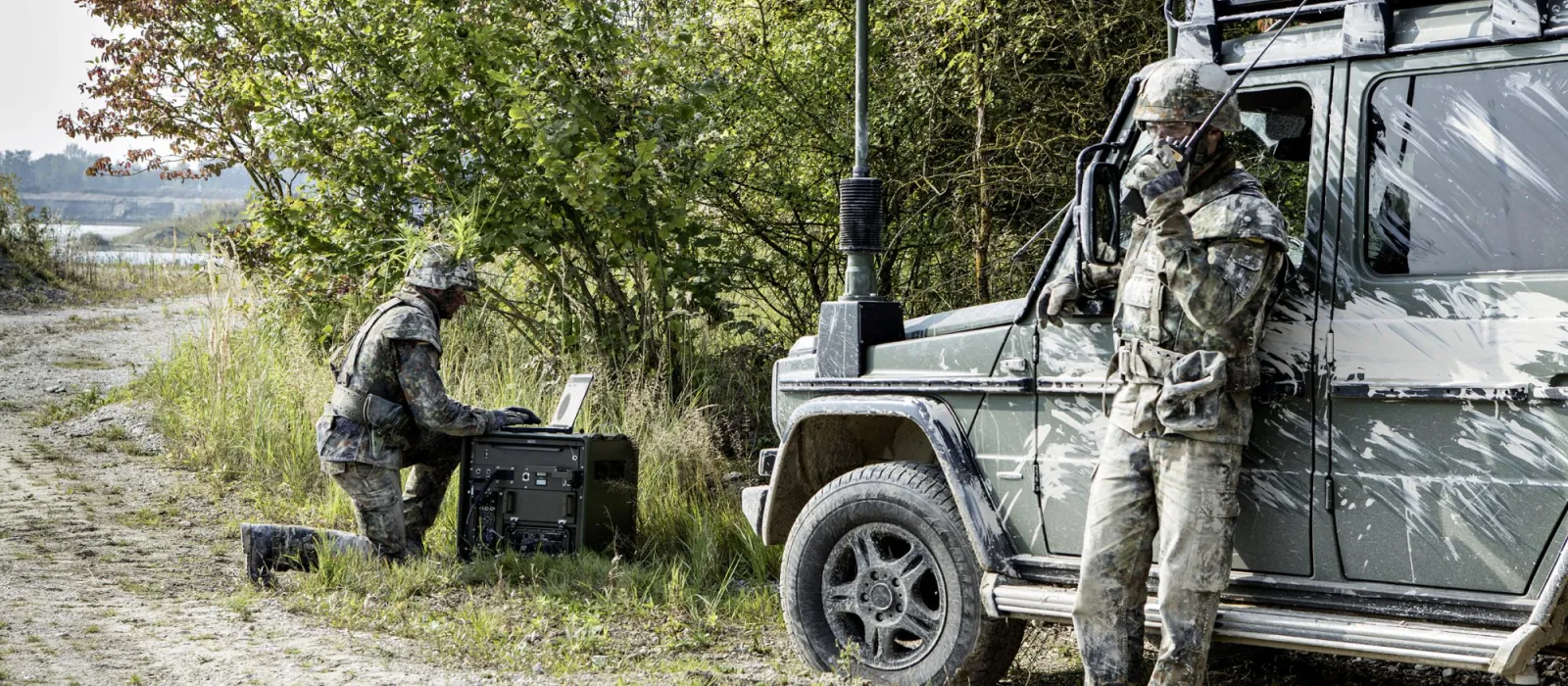
Military Systems and Components Testing
As recognized testing partner IB-Lenhardt AG provides design and delivering of EMC and RF testing programmes for your communications and short range radar systems. You benefit from our support from the initial test plan development on through the final test reporting.Military Defense Industry
Accredited EMC and RF Testing Services
The armament and defense industry produces more and more high-tech components and systems such as software defined portable radios, drones, fusion goggles as well as radio remote ignition systems and tactical on-board radios, that must be able to withstand the highest levels of stress and be absolutely accurate, reliable and secure in the field. This is accompanied by highest demands on development, verification and testing of the military defense equipment.
In order to avoid risks from special influences from the military environment for the safety and operation of tactical communication and radar systems, complex procedures are used in the testing of military defense systems, to ensure that the characteristics of these radiocommunication systems are within the limits of the standard.
Defense Communication Equipment
Robustness and reliability are key requirements for military, tactical and law enforcement radios.
-
Voice and Data Communication
- Ensure successful communication in every situation
-
Surveillance
- Receive all radio signals in the entire frequency range
-
Geolocation
- Locate asset tracking devices in real time
-
Navigation
- Navigate in performance-based environments
Full Scope Services of Military Communication and Short Range Radar Systems
Comprehensive EMC and RF testing methods to military standards (MIL-STD-461, NATO AECTP-500, Def Stan)
End-to-end DAkkS-accredited testing capabilities: anechoic and semi-anechoic chambers, copper shielded rooms and ground planes
Expert test engineers with many years of experience
Single-source test solutions for defense standards validation
Comprehensive consulting services: support for military equipment qualification, meeting contract deadlines, component verification assistance
Our engineers not only deliver the testing but also stand at your side for consulting on any questions or difficulties you may have.
Electromagnetic Compatibility Testing
EMC Testing for the Military Defense Industry
As your reliable partner for electromagnetic compatibility (EMC) testing, IB-Lenhardt AG and its subsidiary IBL-Lab GmbH offer comprehensive EMC testing according to military standards to meet the requirements for military communication systems and components at an early stage of development.
The analysis of emissions and immunity provides information about the potentially unwanted propagation and reception of electromagnetic energy and high-frequency interference. EMC testing is mandatory to ensure electromagnetic compatibility of components and mitigate vulnerability to outside sources.
You can be sure that your project is in the best hands with us - with our many years of experience and comprehensive EMC testing know-how, we support you from the very beginning.
Radio Frequency Testing
High-End Military Radio Equipment
Instruments used in tactical communications radio segments are required to cover a wide range of applications and complex technologies. Testing these high-end military radio equipment requires know-how, high-quality equipment and competent engineers to verify single analog and digital components.
Performing MIL-STD testing for suppliers of military systems, sub-systems, and components includes among others interoperability and coexistence tests. With the measurement solutions from Rohde & Schwarz we offer the highest performance and reliability.
IB-Lenhardt AG and IBL-Lab GmbH enable radio frequency qualification according to international standards, and customization for private or national security standards.
MIL-STD
European and International Military Standards
DEF-STAN 59-41
DEF-STAN 59-411
MIL-STD-461
MIL-STD-462
MIL-STD-464
MIL-STD-704
MIL-STD-810
MIL-STD-1275
NATO: AECTP 250, AECTP 500
RTCA: RTCA/DO-160